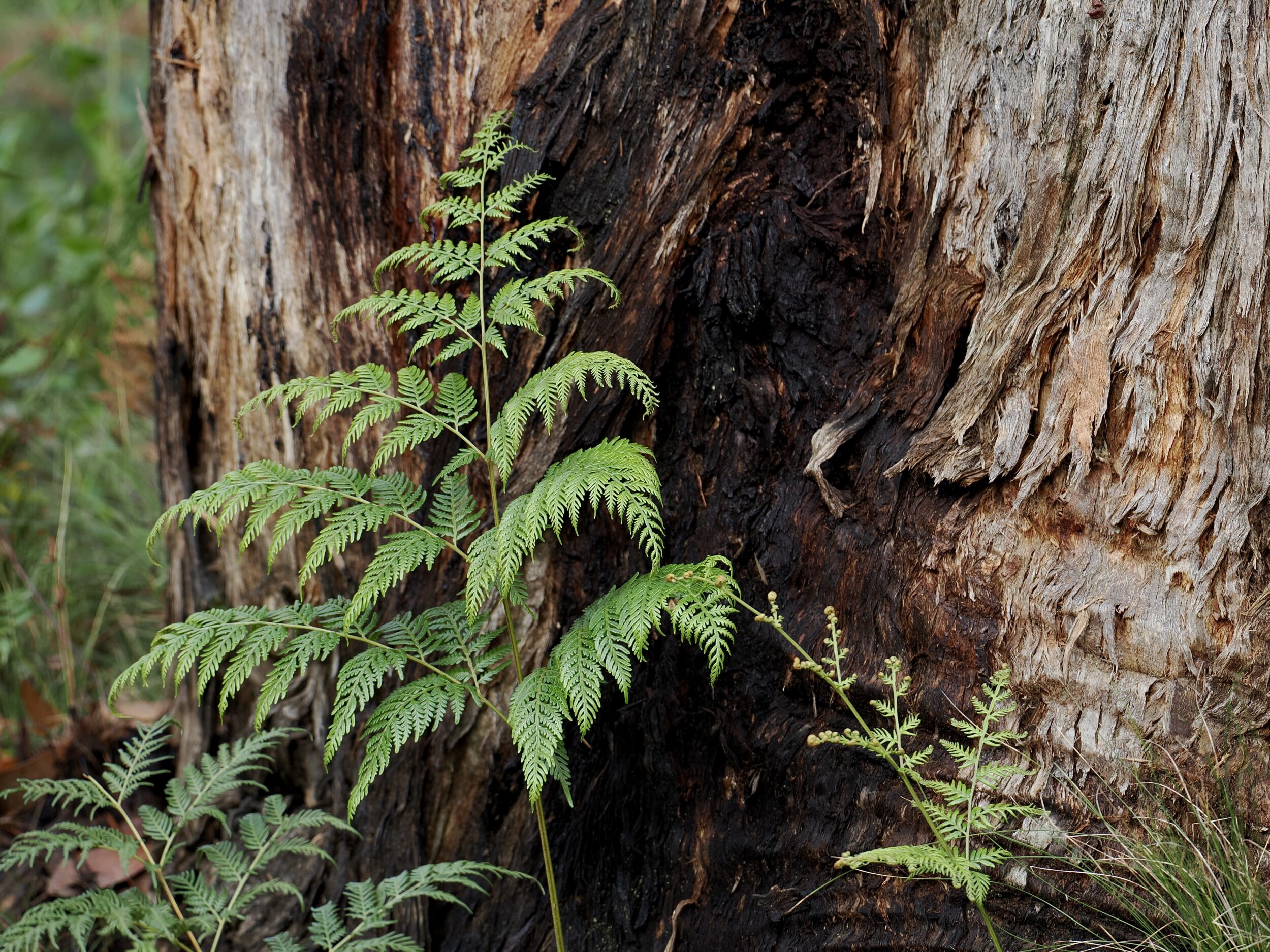…and ferns.
However – as later posts will reveal – although “the greenery” is lovely, what makes this particular forest’s “floor” so amazing are its non-photosynthesizing, legless, living beings.
Ferns aside, you are looking at the base of a venerable member of Eucalyptus obliqua.
In 1788, it became the very first named species within the Eucalyptus genus.
It is generally known as “messmate stringybark” or simply as “stringybark”, although some Tasmanians call it “Tasmanian oak”. (it is not the only stringybark species)
Messmate stringybarks grow – or used to grow – across a diverse range of “temperate” habitats in Australia’s southeast.
Dimensions and general appearance are remarkably varied; the tallest “Tasmanian oaks” are among the world’s tallest flowering plants, but messmate stringybarks in dry scleropyhll forests/woodlands can be scrawny-looking and short.
Although far from their genus’s hardest or densest wood, messmate stringybark timber is highly attractive, durable, and much-prized.
Click here for a nice overview of this “tough as boots” species.
The “big” trees in Deep Creek Conservation Park’s old-growth Stringybark forest are “modestly-sized” by Tasmanian wet-forest standards, but a deal “grander” than the stringybarks in some of mainland Australian dryer forests and woodlands.
Summers are typically pretty dry on the Fleurieu’s southern rim – albeit a good deal cooler than Adelaide’s – but most winters are “properly wet”…and decidedly chilly.
Musical bonus
This series’ hero has inspired a beautiful composition and performance.
Bosnian-Australian Goran Gajić is composer and double-bassist. He is in duo with multi-instrumentalist Philip Griffin, playing oud. (Philip is also a fine photographer)
(this is from Moving Home, the second album by “East of West”. That fine trio’s other member is hand drummer Malindi Morris. The album is available via this link)

Also known as Australian oak, is was widely used as timber ranging from house construction to furniture. Much of the stringy forest in the Adelaide hills was cut down post WW2 for the housing boom timber as well as to be burnt in the brick works, What mostly exists now is the regrowth, not the original forest. It makes great fire wood although not as good as red gum. Nallee roots are best but thankfully land clearance has slowed down.
The fern is bracken